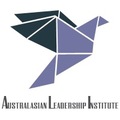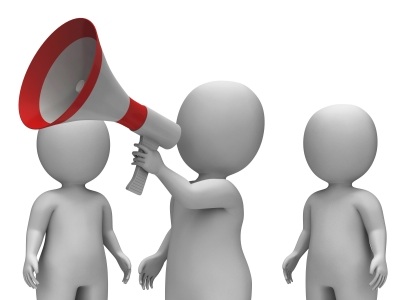The Art of Communication by Mark Wager
Image courtesy of Stuart Miles / FreeDigitalPhotos.net
The Art of Communication
By Mark Wager
We can’t achieve anything of significance without effectively communicating with other people. Every minute of the day we are communicating even if we are not conscious of doing so. Communication seems so easy. We just tell people what we want, they listen and go-ahead and do it, but how often does this actually happen. How many times do two people communicate and walk away with a different understanding than what was intended. We communicate so often that we easily underestimate the value of just how good communication really is.
In this article I will be looking at the art form that is effective communication and to break it down into some simple key learnings.
Let’s break down effective communication into its simplest components. In order to communicate effectively you need to focus on two key areas which are respect and clarity.
Effective communication = respect + clarity
“Trust is the glue of life. It's the most essential ingredient in effective communication. It's the foundational principle that holds all relationships.”
Stephen Covey
Respect
Anyone who wants to communicate effectively needs to show respect. The first and most effective way to do this is by being honest. This sounds simple but you will be amazed at the number of leaders I coach who have struggled with this concept. Don't get me wrong. I’m not talking about people who are deliberately lying but people who struggle with the impact of letting people know what is really happening whether it’s the fear of exposing weakness or disappointing people, it is very difficult to be authentic. What a lot of people fail to realise is that none of us are amazing actors, and the truth is that no matter what we are feeling people tend to pick it up. How many times have you heard someone say something and you just know instinctively that something is wrong. You may not be able to articulate it but maybe it’s the tone of the voice or slight clues from body language but you know something is not right. The best leaders have the courage to be authentic.
“It is not the voice that commands the story; it is the ear.”
Italo Calvino
The second aspect of respectful communication is active listening. This is when you are showing the signs that you are truly listening and engaging in a conversation. When I’m training new leaders I run a small exercise to demonstrate active listening. I split the group into pairs and I explain to one of the pairs that they need to talk about the most passionate thing in their life for about five minutes. The subject is immaterial as long as it’s something they are passionate about. The other of the pairs I take away and give separate instructions. They are told to actively demonstrate the signs of active listening (nodding heads, asking questions, eye contact) for the first half of the conversation and for the second half demonstrate the completely opposite behaviour (act as if they are not interested, look away, check your phone no eye contact.) The pairs gather together and the conversation starts. During the first half of the conversation the speaker is receiving positive reinforcement from the listener and everyone is happy but when the behaviour changes from active listening to non-active listening all hell breaks loose. Active listening is simple yet it’s difficult to go a day without observing a conversation that involves no such thing. Seeing people check emails during a conversation is way too common especially in board meetings.
“Electric communication will never be a substitute for the face of someone who with their soul encourages another person to be brave and true.”
Charles Dickens
The second key component of effective communication is clarity. It’s common for Managers to mistake lack of clarity in communication for poor performance. Too often I see people being viewed as poor performers when in fact they just haven’t been communicated to in a way that they understand.
In order to establish clarity you need to remember four key areas. You need to be specific, explain expectations, consequences and finally ask questions.
Be specific: When communicating try to stay away from judgments and focus on specific behaviours by way of examples. if someone continually arrives late at work a judgment may be that the person is being unprofessional while the specific behaviour is turning up at 9:00 instead of 8:30. It’s easy to argue a judgement as there may well be many reasons for coming in late and unprofessionalism is just one option yet if you focus on the specific behaviour then it’s easier to be on the same page and find a solution.
“The single biggest problem in communication is the illusion that it has taken place.”
George Bernard Shaw
Set clear expectations: If you need something by 2:00 p m don’t assume that people know that. Be clear. We all see or perceive the world in different ways and by setting down clear expectations we can reduce the chances of miscommunication. Like the example above saying “I want it quick” can mean different things to different people. For some people, quick is the same day while for others, quick is same week. Don't assume your definitions are the understood and don’t assume it’s common sense because its not. Make your expectations clear.
Explain consequences: This can be a challenge for people as the word consequences brings up images of threatening or warning. Do this or else this is what will happen. It doesn’t have to mean a threat, it means you are being honest about what’s going to happen. It’s about giving people context and making them accountable and responsible. “I need this suit cleaned by 2:00 pm because I’m attending a charity event tonight. " A lot of miscommunication happens when people do not know the consequences so they assume the consequences and act accordingly. If something is important make sure they know its important and why it's important.
Ask questions: Finally you need to confirm that the message is understood and don’t make the common mistake of asking “do you understand?” When communication goes wrong it’s because both parties believe they understand so they will always answer yes. The key is to look for applied learning as opposed to agreement. Ask a question that confirms they understand the situation.
Communication seems simple but it’s complex in nature because people are complex. But remembering a few simple tips can turn a complex equation into a simple one
Respect + Clarity = effective communication
“To effectively communicate, we must realize that we are all different in the way we perceive the world and use this understanding as a guide to our communication with others.”
Tony Robbins
About the Author:
Mark Wager is a Leadership Coach who specialises in turning good Managers into elite leaders. If you want to prepare for a career as a leader or if you want to give your team a spark then contact Mark using the enquiry form below.
Posted: Monday 14 July 2014

